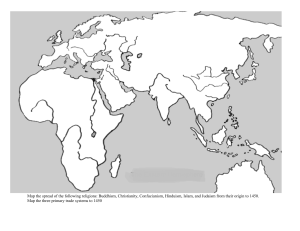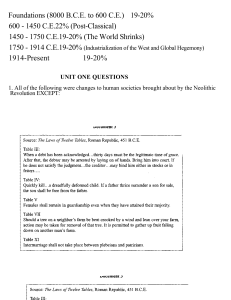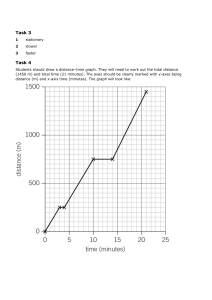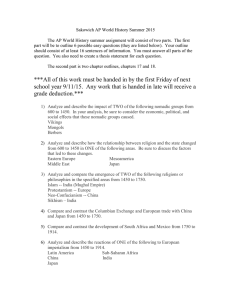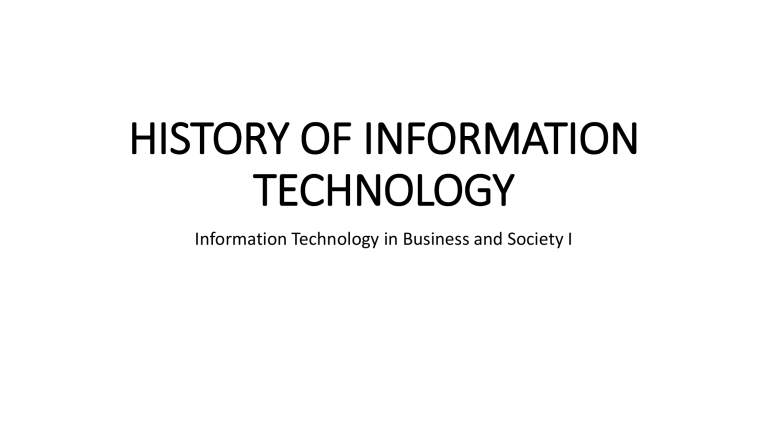
HISTORY OF INFORMATION TECHNOLOGY Information Technology in Business and Society I History of Information Technology • There are 4 main eras in the history of IT: • The Premechanical Age: 3000 BC and 1450 AD • The Mechanical Age: 1450 – 1840 • The Electromechanical Age: 1840 - 1940. • The Electronic Age: 1940 - Present. 1. The Premechnical Age • It is the earliest age of information technology. • Between the years 3000 BC and 1450 AD • Its first form: Writing and Alphabets • Cuneiform (around 3000 BC), then symbols (around 2000 BC). 1. The Premechnical Age • Papers and Pens • Sumerians, Egyptians, Chinese • Books and Libraries • The first numbering system is also discovered in this age. • Egyptians and Hindus in India used the numbering system. 1. The Premechnical Age • The numbering system similar to those we use today is invented between 100 and 200 AD. • The invention of zero comes much later. 1. The Premechnical Age • The first calculator is also discovered during this age. 2. The Mechanical Age: 1450 – 1840 • This is the age that we observe the first connections between the technology of today and its ancestors. • Slide rule is invented (early example of analog computers). • The first general purpose computers are developed. • "computer: one who works with numbers." 2. The Mechanical Age: 1450 – 1840 • Slide rule. • An analog computer used for multiplying and dividing. 2. The Mechanical Age: 1450 – 1840 • Blaise Pascal invented the Pascaline machine. • Difference engine is invented by Charles Babbage. • Ada Lovelace is the first programmer. 2. The Mechanical Age: 1450 – 1840 • Punch cards is the another development in this era. • Introduced in 1801 • Binary logic • Fixed program operating in real time. 3. The Electromechanical Age: 1840 - 1940. Communication • The most important advance in this era is to use electricity. • The developments in this age are the beginnings of communication. • Telegraph (early 1800s), radio • Morse Code • Telephone (examples in 1876, 1930, 1970 respectively). 3. Electromechanical Computing • The International Business Machines Corporation (IBM). Mark I around 1940 • Programmed by using punch cards (no storing) Mark I -1942 (for the WW II) 4. The Electronic Age: 1940. – present • That is the age that we are currently living in. • ENIAC – the first high-speed, digital computer capable of being reprogrammed to solve a full range of computing problems. • Used vacuum tubes – no mechanical devices. • No storage of programs. • The first stored program computer(s): The University of Manchester Mark I and The EDSAC in Cambridge in 1949. • The First General-Purpose Computer for Commercial Use: Universal Automatic Computer (UNIVAC) The Four Generations of Digital Computing: • 1. The First Generation (1951 – 1958) • Vacuum Tubes and punch cards – used in ENIAC and Mark I Second Generation (1959 -1963) • From Vacuum Tubes to Transistors • Punch Cards to Magnetic Tapes Third Generation (1964 -1979) Integrated Circuits Fourth Generation (1979 – present) Apple’s first Mac with Graphical User Interface (GUI) The four generations of digital computing References • Laudon K. And J. Laudon, Management Information Systems Managing the Digital Firm, 12th Ed., Pearson Prentice Hall, 2012. • Baltzan, P., Business Driven Information Systems, 4th. Ed., McGraw Hill, 2014. • Valacich, J and C. Schneider, Information Systems Today Managing in the Digital World, 5th Ed., Prentice Hall, 2012.
